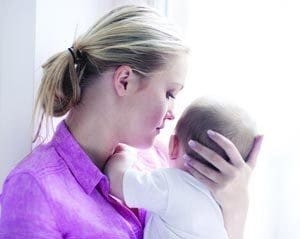Safety Guidelines, Fencing, New Parents in Southern MD
Safety guidelines for new parents in Southern Maryland.
 Welcoming a new child into a family dynamic requires certain adjustments on the part of family members. New parents have come to expect shortened sleep schedules as they handle early-morning feedings and babies who haven’t quite adjusted to their parents’ sleep/wake schedules.
Welcoming a new child into a family dynamic requires certain adjustments on the part of family members. New parents have come to expect shortened sleep schedules as they handle early-morning feedings and babies who haven’t quite adjusted to their parents’ sleep/wake schedules.
Parents soon learn another aspect of childcare that fills their days is safety. Keeping little ones safe, whether at home or on the go, becomes the utmost priority.
The Centers for Disease Control and Prevention’s “Childhood Injury Report” indicates more than 12,000 children die each year in the United States from an unintentional injury. Injuries involving transportation, drowning and suffocation account for the largest number of accidental deaths among young children.
One of the first safety steps parents can take is to become informed about common childhood injuries and statistics. Educating oneself about the potential for injury is the key to preventing accidents from occurring.
The next step is to take measures to childproof areas in and around the home. Various organizations, including Kids Health, the Consumer Product Safety Commission and the National Safety Council, recommend caregivers take the following safety measures.
· Create boundaries in Southern Maryland and keep your children safe with a fence. This is especially important if you live you near a road, have a pool or your neighbors have dogs.
· Use safety latches and locks for cabinets and drawers to keep children away from potentially harmful poisons and household items.
· Employ safety gates to prevent falls down stairs and to keep children from entering rooms that are not supervised or contain possible dangers.
· Keep track of baby’s milestones, including when infants learn to pull themselves up in the crib. The crib mattress should be set to the lowest position and items removed so curious kids cannot climb out of the crib.
· Bathtubs are a common location for injury. Never leave a child unattended in a bath – even for a minute. Bathrooms can be made safer by installing a soft cover on the bath faucet head, using a secure and non-skid bath seat for the child and relying on a thermometer to check the temperature of the bath water.
· Use knob covers to prevent access to the stove. Always supervise children in and around the kitchen, where there are many hazards and hot surfaces.
· Use bolts or anchors to secure items like televisions, bookcases or dressers to the wall to prevent them from tipping over.
· Getting a shock is easy when babies with saliva-drenched fingers touch electrical outlets. Use safety plugs or special covers to prevent access.
· Make sure area rugs are secured with a nonskid backing and repair any tripping hazards so children do not fall while learning to walk.
· Drapery and blinds cords should be kept out of youngsters’ reach. Window coverings that are cord-free are safer options.
· Parents can benefit by learning CPR and other first aid techniques. You never know when they might come in handy.
· Window guards and safety netting can prevent falls from windows, balconies, landings, and decks. Check these safety devices frequently to make sure they are still secure.
· Be sure to check that smoke and carbon monoxide alarms are functioning as they should and have fresh batteries.
· Create layers of protection around a swimming pool, which includes installing self-latching fences, alarms and safety covers.
· Make a first aid kit and store emergency instructions inside. Post important phone numbers close to a landline phone or program them into a mobile phone.
· Use corner guards to protect young heads from falls against furniture or fireplace hearths.
These are just some of the safety measures parents can take to safeguard their young children from injury at home. Kids’ pediatricians also may have other information that can help prevent accidents and save lives. FP155127
